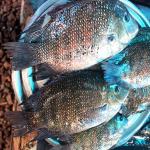ATREE News

The ‘mad babul’ spreads its roots, dominating Indian desert fox habitat
Gujarat’s Banni grasslands are home to 40 species of grasses – from a rare grass that has no local name to one that almost only grows inside well-walls. The grasses, in turn, support a variety of wildlife, from the endemic spiny-tailed lizard to migratory birds that make their way here after the monsoon transforms dry tracts into lush wetlands. But a woody invasive plant, Prosopis juliflora, is encroaching much of the grassland. This in turn is resulting in the loss of habitat and resources for the Indian desert fox, an open habitat species. This could potentially impact the conservation status of this already range-restricted species in India.

Invasive Plant Mapathon event in the Nilgiris
Students, Researchers, Ecologists, Forest Department Officials have participated in the two day Invasive Plant Mapathon event in the Nilgiris. The event was organised by ATREE and Keystone Foundation in coordination with NNHS and Clean Coonoor. The Mapathon covered the slopes of Kotagiri and Coonoor. The participants were trained to identify invasive species and use the ODK Collect application to record them on the field. The upcoming mapping events will cover further regions of the Nilgiris.

In Gujarat, the ‘mad babul’ tree is taking over the home of the Indian desert fox
Gujarat’s Banni grasslands are home to 40 species of grasses – from a rare grass that has no local name to one that almost only grows inside well-walls. The grasses, in turn, support a variety of wildlife, from the endemic spiny-tailed lizard to migratory birds that make their way here after the monsoon transforms dry tracts into lush wetlands. But a woody invasive plant, Prosopis juliflora, is encroaching much of the grassland.

Role of WebGIS in implementation of Community Forest Resource Rights
How do we as researchers help in the implementation of a progressive but complex piece of nature resource legislation? The implementation of the Forest Rights Act of 2006, especially its community rights provisions, has raised this question for us repeatedly. Typically, research tends to be post-facto: showing what went wrong with Joint Forest Management, or throwing light on how implementation could have been better in the case of the FRA. Supporting ongoing implementation efforts presents a different challenge: interfacing our somewhat academic understanding with the particular ground realities of state administration and people’s priorities. Our new project on “Training, Capacity-Building and Decision Support for CFR Rights Recognition and Management in Bastar district”, where the Bastar district administration invited us to provide such support, has thrown us this challenge. But we are heartened to find that our specialised knowledge can indeed make a difference!

Earth Day: The ‘yuck factor’ with wastewater reuse must be addressed to save freshwater, reduce water pollution
The treatment of reclaimed water (treated wastewater) and its reuse has become a significant area of interest because of its potential to address many pressing urban challenges. Indian cities are grappling with steeply rising freshwater demand due to rapid urbanisation and exponential population growth. The treatment of the resultant wastewater has proved equally challenging; a lot of it ends up polluting urban water bodies.

Cleaning of Tamirabharani to begin tomorrow
The district administration launched a programme from April 23 to clean the Tamiraparani river and remove encroachments along the river course. At the joint initiative of Tirunelveli district administration, Nellai NeerValam, ATREE and IIHS prepared the Tamiraparani restoration plan. Four hotspots (ritual, invasive, irrigation tank rural and urban) have been selected as pilots for restoration. The ritual hotspot pilot was initiated on 23rd March 2022 on the occasion of World Water Day. Mr V.Vishnu, District Collector, Tirunelveli. The concise document of TamiraSES and documentary movie on the Tamiraparani river system were also released on the occasion of World Water Day. The rest of the three pilots will be started in the month of May 2022.

29 new insect species identified in south, North East India
Down to Earth's new photostory highlights the 29 new species of insects described by the Insect lab at ATREE. The newly identified insects were collected from the Western Ghats and the North East in the last one year.

New wasp genus from the Western Ghats
Entomologists have discovered a new parasitic wasp in a tiger reserve in the Western Ghats

Can solar power save India’s iconic houseboat capital?
According to Jojo Devassy, regulators tend to blame the diesel motors of houseboats for Vembanad Lake’s pollution. In reality “diesel pollution accounts for only 10 to 15 percent of the problem,” he says. “The buildup of microorganisms and the lack of septic treatment facilities are bigger issues. The barrage is another. Then, you’ve got all this silt washing down from the Ghats causing lake levels to drop.”

Charru hits pearl spot habitats
Fishers are finding it hard to net a good catch as both the piscean population and size have collapsed over the years. The story is no different for many inland fishers who depend on Ashtamudi and Vembanad for their livelihood, especially after Charru mussel, an invasive bivalve species, started colonising the creeks. The change in the estuarine ecosystem has been posing a serious threat to pearl spot habitats, resulting in an ever-dwindling yield.
Ashtamudi Fish Count 2022. jointly conducted the Department of Fisheries, Ashoka Trust for Research in Ecology and the Environment (ATREE) and Department of Aquatic Biology and Fisheries, University of Kerala, last month had recorded a widespread invasion of the mussel and a decline in the mean size of pearl spot.